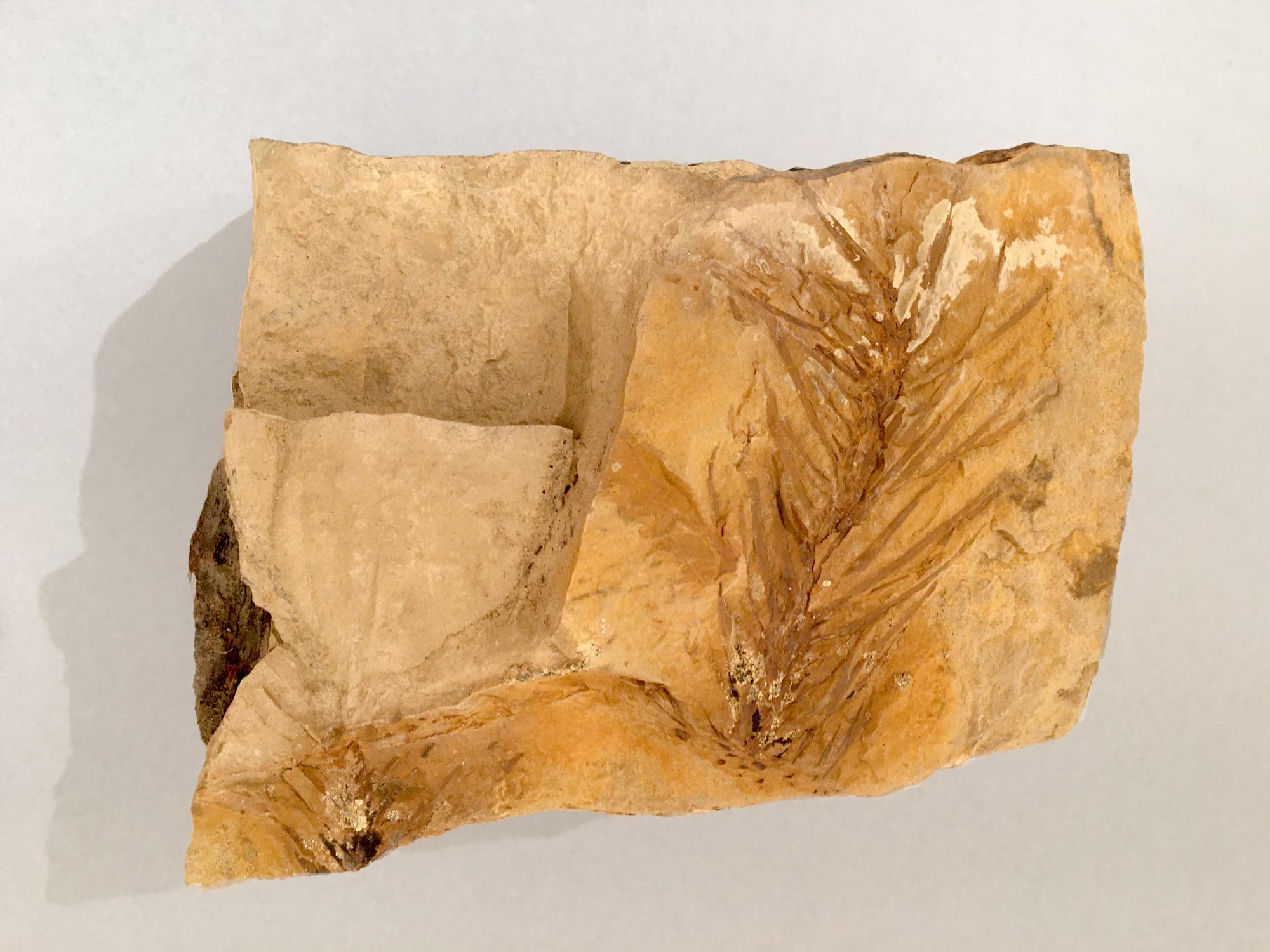Some information may be outdated.
In a region of the world rich in dinosaur history, fossils of ferocious Mesozoic predators often get most of the limelight. While the rocks around Moab contain abundant, unique, and awe-inspiring dinosaur fossils, fossilized plants are also present in the cliffs and canyons of southeastern Utah and add valuable detail to scientists’ understanding of earth’s history.
Several fossilized plants are on exhibit at the Moab Museum to tell the story of that ancient time. One light-colored block of solidified volcanic ash contains the impression of several overlapping fern leaves. This plant, buried rapidly in a layer of volcanic ash that preserved the delicate details of the leaves and stems, comes from the 100-million-year-old Naturita Formation found in western Colorado and eastern Utah. This fern would have grown in a swampy environment at a time when much of the western United States was a shallow sea, known as the Western Interior Seaway. During this time in the Late Cretaceous Period, dinosaurs roamed the earth, and the presence of plant fossils in rock layers from this time helps scientists determine what the environment would have been like then for the animals living in the area.
Another fossil specimen, slightly younger, shows conifer stems preserved in a block of tan-colored stone. This specimen, from the Roan Cliffs area near Price, Utah, is about 75 million years old and comes from a river delta environment comparable to today’s Mississippi River Delta. Specimens such as this provide evidence to scientists about the different climates of Utah’s deep past, as geologic forces have shaped the landscape into the place we know today.
Moab History is provided by The Moab Museum, which is dedicated to sharing stories of the natural and human history of the Moab area. For more information, visit www.moabmuseum.org.
Appreciate the coverage? Help keep local news alive.
Chip in to support the Moab Sun News.





